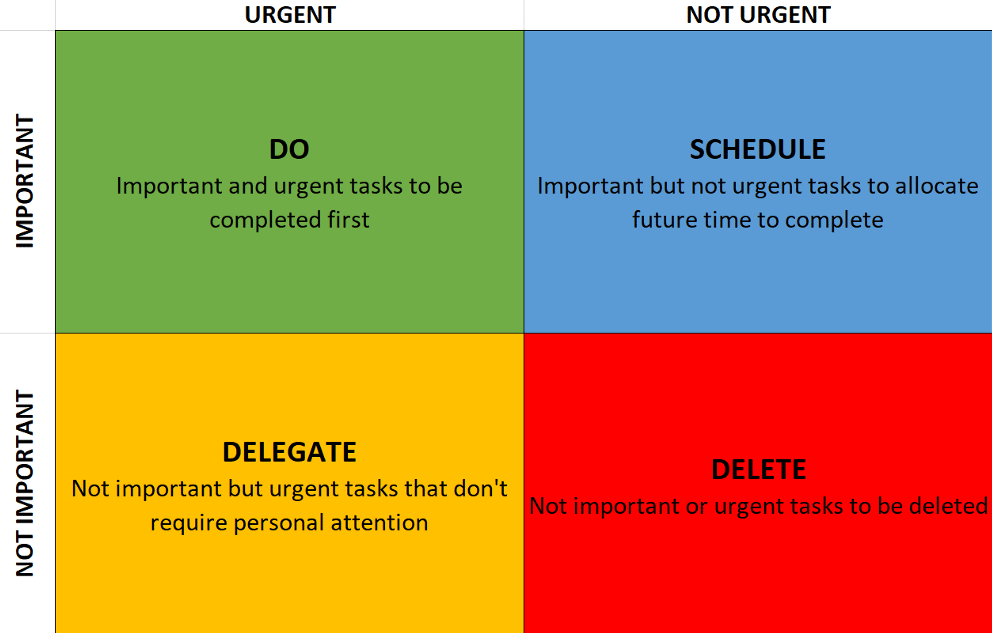Urgent / Important matrix
A decision making formula
3/18/20241 min read


Dwight D. Eisenhower—the 34th President of the United States quoted an unnamed university president when he said, “I have two kinds of problems, the urgent and the important. The urgent are not important, and the important are never urgent.”
This would later lead to Stephen Covey to develop the Eisenhower Matrix.
Sometimes it's hard to make decisions. What to do, what not to do.... Here is a simple formula to help make those decisions.
This simplifies the sometimes complex process of making everyday decisions. I call it simple because it does not consider any outside complications. It is basically a framework, from which the complexities of life can be added.
Deciding what to do and when is important and, in order to make the right decision, it's important to work out priorities. First, work out whether it's important or urgent. If it's important and urgent, this needs the highest priority. Here, it's best to follow the Nike slogan.
If a task is important but not urgent, then it's best to schedule it at a convenient time. This is where planning comes in. Planning is done mainly by the prefrontal cortex
Putting first things first means organizing and executing around your most important priorities. It is living and being driven by the principles you value most, not by the agendas and forces surrounding you.”
The Four Quadrants of Time Management
We spend our time in one of four ways, depending on the two factors that define an activity: urgent and important. Urgent means it requires immediate attention. Urgent things act on us and are usually visible. For example, a ringing phone is urgent. Important things, on the other hand, have to do with results. It contributes to our mission, values, and high-priority goals. Usually they aren't so urgent, yet they are still important- hence the name!
We react to urgent matters. Important matters that are not urgent require more initiative, more proactivity. More time....